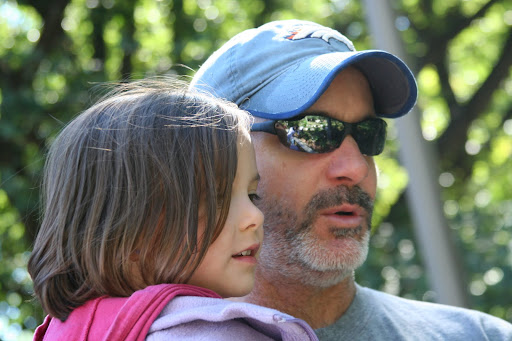A historical tour of the cultural and architectural scale along Benefit Street in the capital city of Providence, you must first take root in the seed of the founding of Rhode Island by Roger Williams. Radical religious beliefs to the Protestant theologian against the Church of England and also with the flock approached the Lyon in December 1631, and settled in Boston in the New World. Roger raised a storm as tumultuous as any storm along the Atlantic marrying three principles dear to his heart, separatism, religious freedom and separation of church and state. In addition, the study of Native Americans led him to doubt the validity of the colonial charters of the King, who wrote an extensive treatise Massachusetts governor in 1632, advocating the purchase of land from the Indians.
In 1635, Williams was tried by the General Court and convicted of sedition and heresy. The command to be banished, the disease delays the execution of this decree. However, he skipped town in 1636, walking through deep snow on a journey of 105 miles of Salem at the head of Narragansett Bay, where he received a warm welcome by the Wampanoag. Fearing extradition of foreigners, a group of supporters called on the fugitives across the Providence River. Roger Williams called this settlement that started with twelve friends, "Providence", whose meaning is derived from "divine help of God."
Roger Williams served as governor of the colony from 1654 through 1658, and is believed to have died sometime between January 28 and March 15, 1683 with a burial on your property. Fifty years later, his house collapsed into the basement, and the tomb of a great man was forgotten until 1860, when Zachary Allen tried to locate the remains of the first governor. This effort to limit the stranger: "The root of an apple tree was discovered the tree had pushed to the floor of one of its main roots in an inclined direction and then almost straight to the right place that had been occupied by the Roger Williams skull .. not make a turn according to its circumference, the root followed the direction of the spine and hips, and then divided into two branches, each following a bone of the leg with the heel .. . '(Report on the burial place of Roger Williams by Howard M. Chapin published in Providence, 1918). English of the King, the apple tree root had a strong resemblance to the outline of the skeleton belonged to founding father of Rhode Island.
The apple tree root is now regarded as a curiosity and is maintained by the Rhode Island Historical Society at the John Brown House Museum (52 Power, corner of benefits). Group, school and special tours are available by appointment. Call (401) 273-7507 to schedule and inquire about the hours of opening to the public. While you are in the vicinity of the apple tree root Roger Williams consumed should be "power" to other sites of historic cultural and architectural scale, a short distance along Benefit Street, Providence, the city is known by the name of its founding father:
The Rhode Island Historical Society: Benefit Street, a mile of history - ongoing programs, exhibits and opportunities where you can absorb more than three centuries of history, taking in the beautiful surroundings of the century architecture 18 and 19, art installations and sculptures, gardens and river activities, and the vibrant pace of surrounding urban neighborhoods. Regularly scheduled walks and theme are available for conventions and special groups, or with advance reservations. (401) 273-7507
Rejected the House (135 Benefit Street): The Stephen Harris House built in 1763, became famous by Providence writer HP Lovecraft. People died there in an excessively large number may be due to moisture and fungal growth in the basement, the smell sickly-projects in the hallways, or quality of the well and pump water - thus "rejected".
The Rhode Island School of Design Museum (224 Benefit Street): Also known as the RISD Museum, Rhode Island main museum of fine and decorative art, houses a collection of 84,000 items of international importance. It's just southeast of New England, full art museum and is accredited by the American Association of Museums.
The Providence Athenaeum (251 Benefit Street): The fourth oldest library in the United States (1753) - not a public library or an academic library or community center or a private club - is a bit of all these things and more. (401) 421-6970
The Nightingale-Brown House (357 Benefit Street): The museum's collections in the house represents and linking each of the five generations of the Brown family. The pantry contains more than 100 pieces of Canton, China, possibly imported to Providence on board merchant vessels of the Brown family in the eighteenth century and used by the family. (401) 863-1177
The First Unitarian Church of Providence (1 Benevolent Street, corner of benefits): The third and current church building, opened in 1816, was designed by prominent local developer, architect, John Holden Greene, with its many beautiful buildings changed the face of Providence during the nineteenth century. (401) 421-7920
A historical walk deeply rooted in the rarity of apple trees consumed founder of Rhode Island, Roger Williams, of course, the branches of other sites of architectural and cultural prominence of points along Benefit Street in the capital city of Providence. Rhode a roll in this area by the natives of Rhode Island and out-of-Towners, is a visual odyssey to bear fruit as the apple of your eye.















In 1635, Williams was tried by the General Court and convicted of sedition and heresy. The command to be banished, the disease delays the execution of this decree. However, he skipped town in 1636, walking through deep snow on a journey of 105 miles of Salem at the head of Narragansett Bay, where he received a warm welcome by the Wampanoag. Fearing extradition of foreigners, a group of supporters called on the fugitives across the Providence River. Roger Williams called this settlement that started with twelve friends, "Providence", whose meaning is derived from "divine help of God."
Roger Williams served as governor of the colony from 1654 through 1658, and is believed to have died sometime between January 28 and March 15, 1683 with a burial on your property. Fifty years later, his house collapsed into the basement, and the tomb of a great man was forgotten until 1860, when Zachary Allen tried to locate the remains of the first governor. This effort to limit the stranger: "The root of an apple tree was discovered the tree had pushed to the floor of one of its main roots in an inclined direction and then almost straight to the right place that had been occupied by the Roger Williams skull .. not make a turn according to its circumference, the root followed the direction of the spine and hips, and then divided into two branches, each following a bone of the leg with the heel .. . '(Report on the burial place of Roger Williams by Howard M. Chapin published in Providence, 1918). English of the King, the apple tree root had a strong resemblance to the outline of the skeleton belonged to founding father of Rhode Island.
The apple tree root is now regarded as a curiosity and is maintained by the Rhode Island Historical Society at the John Brown House Museum (52 Power, corner of benefits). Group, school and special tours are available by appointment. Call (401) 273-7507 to schedule and inquire about the hours of opening to the public. While you are in the vicinity of the apple tree root Roger Williams consumed should be "power" to other sites of historic cultural and architectural scale, a short distance along Benefit Street, Providence, the city is known by the name of its founding father:
The Rhode Island Historical Society: Benefit Street, a mile of history - ongoing programs, exhibits and opportunities where you can absorb more than three centuries of history, taking in the beautiful surroundings of the century architecture 18 and 19, art installations and sculptures, gardens and river activities, and the vibrant pace of surrounding urban neighborhoods. Regularly scheduled walks and theme are available for conventions and special groups, or with advance reservations. (401) 273-7507
Rejected the House (135 Benefit Street): The Stephen Harris House built in 1763, became famous by Providence writer HP Lovecraft. People died there in an excessively large number may be due to moisture and fungal growth in the basement, the smell sickly-projects in the hallways, or quality of the well and pump water - thus "rejected".
The Rhode Island School of Design Museum (224 Benefit Street): Also known as the RISD Museum, Rhode Island main museum of fine and decorative art, houses a collection of 84,000 items of international importance. It's just southeast of New England, full art museum and is accredited by the American Association of Museums.
The Providence Athenaeum (251 Benefit Street): The fourth oldest library in the United States (1753) - not a public library or an academic library or community center or a private club - is a bit of all these things and more. (401) 421-6970
The Nightingale-Brown House (357 Benefit Street): The museum's collections in the house represents and linking each of the five generations of the Brown family. The pantry contains more than 100 pieces of Canton, China, possibly imported to Providence on board merchant vessels of the Brown family in the eighteenth century and used by the family. (401) 863-1177
The First Unitarian Church of Providence (1 Benevolent Street, corner of benefits): The third and current church building, opened in 1816, was designed by prominent local developer, architect, John Holden Greene, with its many beautiful buildings changed the face of Providence during the nineteenth century. (401) 421-7920
A historical walk deeply rooted in the rarity of apple trees consumed founder of Rhode Island, Roger Williams, of course, the branches of other sites of architectural and cultural prominence of points along Benefit Street in the capital city of Providence. Rhode a roll in this area by the natives of Rhode Island and out-of-Towners, is a visual odyssey to bear fruit as the apple of your eye.















Post Title
→A Historical Walking Tour of RI Rooted in the apple that ate Roger Williams
Post URL
→http://girlfight-fighter.blogspot.com/2011/10/historical-walking-tour-of-ri-rooted-in.html
Visit girlfight-fighter for Daily Updated Wedding Dresses Collection


